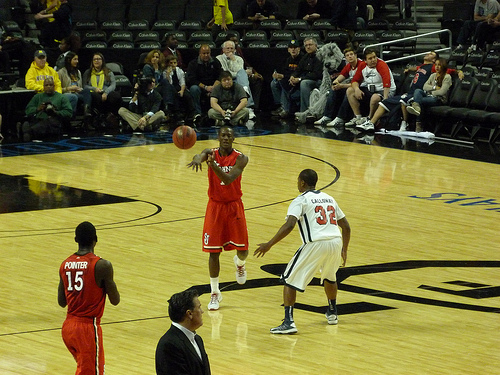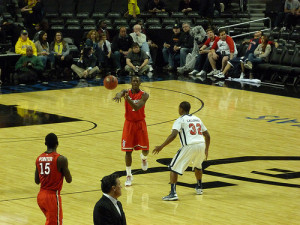How to Teach a Push Pass


The Push Pass is one of the most functional passing techniques in basketball. Especially useful in the half court, the strength of the push pass is in the ability to keep the ball away from the defender when passing.
The push pass has some drawbacks though. One of the most significant is that it focuses on using just one arm to direct the pass. This can be more difficult to control and misdirection is a common issue. This is especially the case in high-speed and pressure situations where players are trying to pass the ball quickly and their technique is not perfect.
Another common issue with the performance of the push pass is the ability of players to generate power. Because the push pass focuses on one arm generating a large part of the force in the pass, young players or those inexperienced with using the pass can sometimes find generating enough power difficult.
Many of the issues faced in using, and perfecting the push pass lie in the refinement of a players technique. These focus points on technique include the following:
Start the Push Pass from a Triple Threat Stance; in all passing situations, and just in general, when practicing different techniques have players start in a Triple Threat Stance so they become familiar with the habit
Players should Step towards the Intend Target; to help start the powerful movement of a push pass players should utilise good footwork by stepping towards the intended target to help build momentum
Maintain low stance during step; at no time should the step result in the legs of the player becoming full straightened. Legs should maintain some bend at the knees
During the Step the Ball moves up the side of the body to the Chest; this movement will force the elbow of the arm on which the ball is to move behind the line of the body. This places the arm behind the ball ready to push through the ball to execute the pass. This action will also see the wrist ‘cocked’ behind the ball with the fingers of the hand pointing up
The Off Hand should remain on the Ball; the offhand should remain on the ball to help with stability and control of the ball
The Ball side Arm now pushes through the Ball; the arm should extend so there is a straight line is created from the shoulder, elbow wrist and middle finger all pointing at the intended target
As the Arm fully extended, the Wrist is ‘snapped’ to put backspin on the ball; the ‘cocked’ wrist should help generate the backspin desired as the wrist is flicked in a downward motion at the end of the arm extension
The push pass comes into its own during pass progression and reversal around the three-point line. The ability for a player to receive a ball on one side of their body, rip the ball to the other side, and then pass while still maintaining solid ball protection is vital in high pressure situations. As players mature and develop their technique, coordination and strength and the push pass can be used more confidently in the full court.





